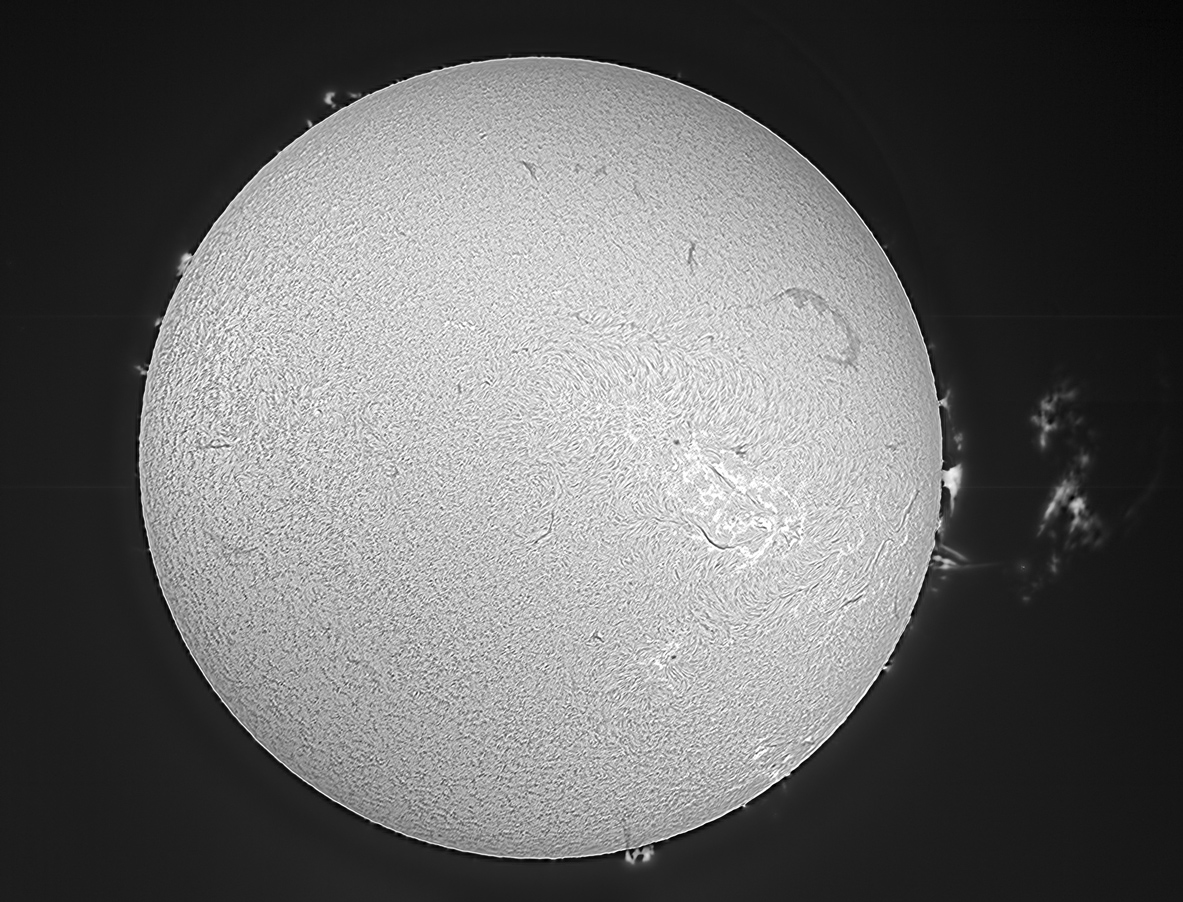

Sun: Our sun has a mean distance from earth of about 93,000,000 miles, and a diameter of about 864,000 miles (a little more than a hundred times that of Earth).
The sun is a very active body, changing noticeably by the hour.
I went out to have a look at the sun at about 10am local time (1700 UTC), and was delighted to see a very large prominence. I watched it for a bit, then left, intending to come back later.
An hour later, I was shocked to see that the prominence had broken away from the solar disc, and was rapidly dissipating. I quickly attached my solar camera, and got this.
It turns out such a phenomenon is knows as a "Disparition Brusque" (sudden vanishing). Disparition Brusque eruptions usually last less than one
or two hours, and vary in form from a simple fading away of the quiescent, to a spectacular "lifting off", where the prominence rises up and drifts away from the sun, slowly breaking up in the process. This was the latter.
Mild surface brightening can also occasionally occur. Sometimes, a vanished quiescent will even
reform a few hours or days later near its previous location. In a few large eruptions, a Dispartition Brusque can produce a Coronal Mass Ejection.
Copyright Mark de Regt, 2015